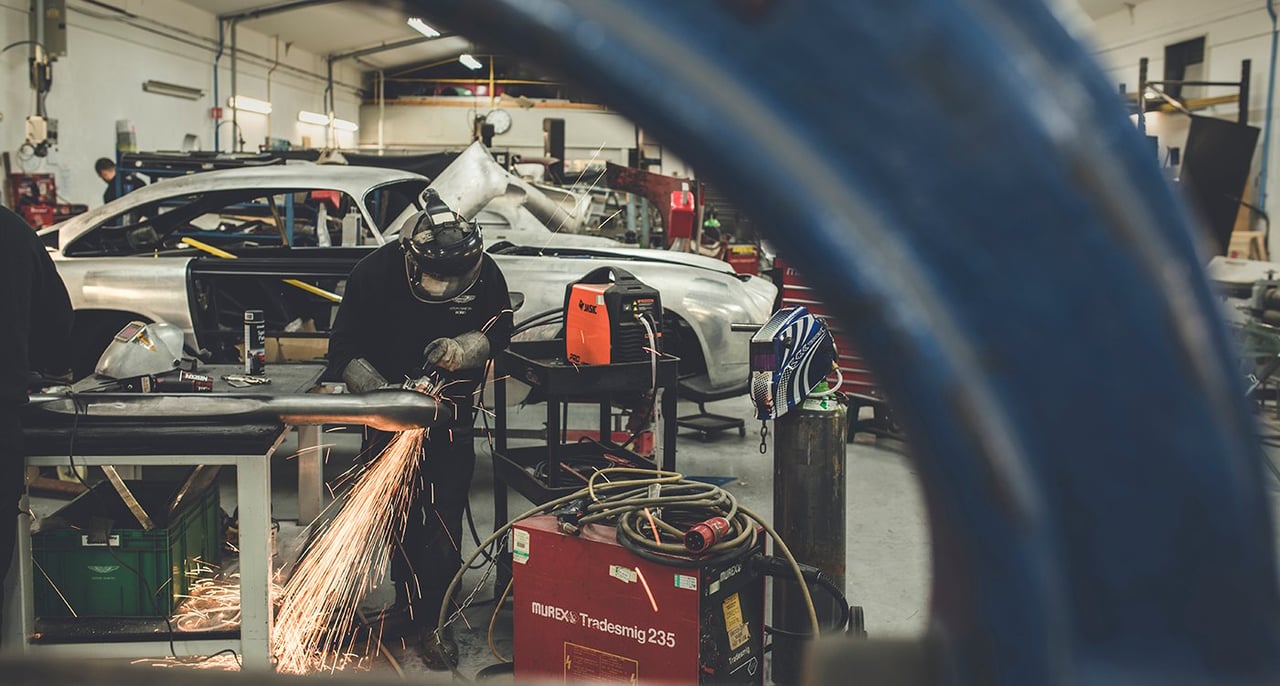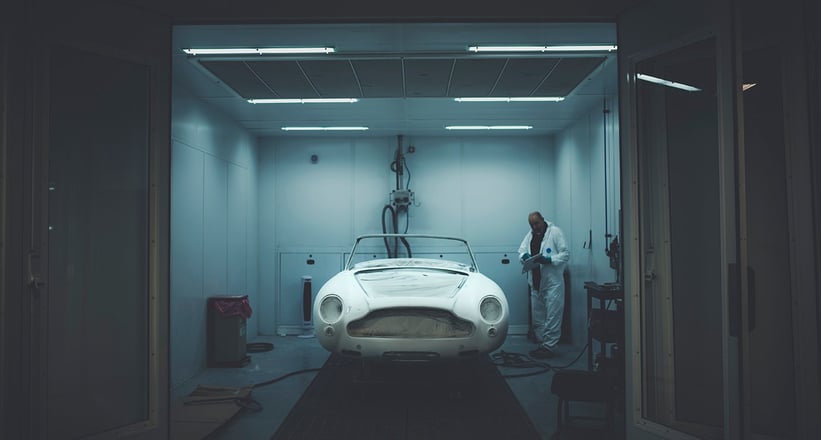In early 2014, Kingsley Riding-Felce stepped down from his position as Managing Director of Aston Martin Works, having become something of a company hero after serving for no fewer than 38 years. His successor Paul Spires welcomes us to the recently overhauled Works site, comprehensively restored in 2012 and partially occupying the grounds of the old factory on Tickford Street in Newport Pagnell. “Kingsley left the company in really good order,” Spires tells us. “He put all the development work in place and grew the business massively – we’re currently servicing, repairing and restoring around 2,700 cars per year.”
Doubling up



The majority of those are internally referred to as ‘new-era’ cars – from the DB7 onwards – but Spires has big plans for Works in 2015, also the 60th anniversary of Aston Martin in Newport Pagnell. “Next year, we’re looking to double our volume of complete restorations. We have enormous global demand for heritage services because as the vehicles increase in price, people want to have that sound provenance that we can deliver at Works.”
Wait reduction



The current waiting time for a full restoration is two years, hence the move to increase capacity – but at least those who’ve waited patiently know what they’re paying from the outset. Works offers a full restoration on any any heritage car for a flat fee of £350,000 plus VAT, provided the car stays in the EU. “Considering the DB5 is probably going to be worth a million [pounds] plus next year, customers are prepared to spend £350,000 to have them restored and to put that provenance back into them. Those cars will then stand apart from any other restored car.”
Racking up the air miles



Another of the popular services offered by Works are the ‘Flying Spanners’, an elite team of mechanics that are deployed globally in situations where shipping the car ‘back home’ is unfeasible. “Any day of the week we’ll have between three and five engineers overseas, completing services and undertaking work on customers’ cars,” Spires tells us. “That’s part of the draw of the Aston Martin Works business – it has this global reputation of Aston Martin excellence. A lot of the significant cars are no longer in Europe, but their owners still want the unrivalled expertise we offer.” We wonder if Spires’ little helpers wear green outfits and pointed shoes on their travels at this time of year?
Photos: Amy Shore




















































